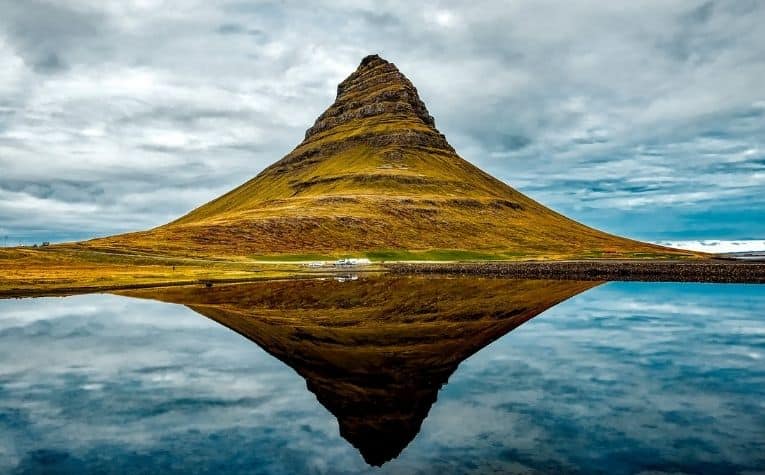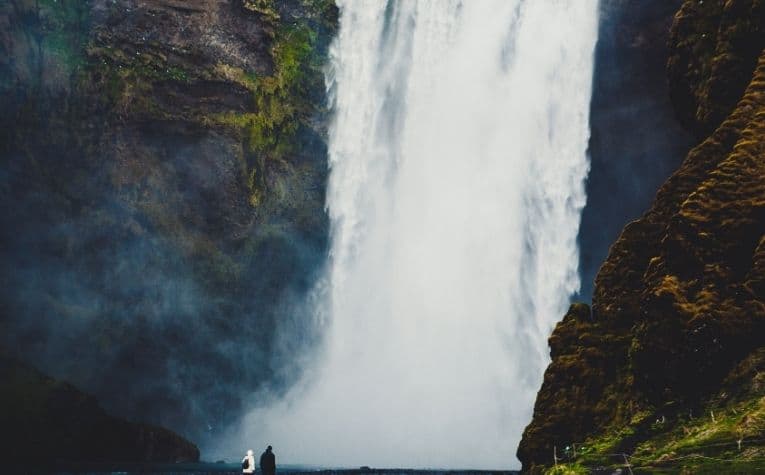Nearly two million tourists visited Iceland in 2019, making this island nation in the North Atlantic a popular, yet somewhat obscure, destination for adventure seekers, globetrotters, and travel enthusiasts alike.
With its rich history dating back to Norse seafaring explorers, and an eclectic mix of hip, modern trends, vibrant cultural offerings, and breathtaking natural scenery, Iceland is a destination like no other.
The five things you need in Iceland are (1) A swimsuit, no matter the time of year, (2) a sleeping mask to make sure you recuperate every night, (3) sunscreen and lip balm for the large Icelandic sky, (4) batteries for your electronic devices, and (5) a headlamp or flashlight to illuminate the dark nights on the island.
Iceland sits just below the Arctic Circle and occupies a landmass of just over 40,000 square miles (103,000 square km) – roughly the same size as the state of Kentucky – and is, therefore, subject to every variation of cold, wet, and windy weather that Mother Nature is capable of producing.
Iceland is a land of the midnight sun and dark winters, and as a common Icelandic saying goes, “Don’t like the weather? Wait five minutes.”
Particularly for first-time visitors, properly packing for a trip to Iceland requires a bit of research and a lot of preparation.
Certain essentials may not be obvious when compiling a list of things to pack, but they are indispensable toward an Icelandic adventure free from worry, hassle, and regret.
Also, see Do all Icelanders Know Each Other? to learn more.

No Matter the Time of Year, Pack a Swimsuit
A swimsuit is an essential item to pack for a trip to Iceland, regardless of the time of year.
And no, it isn’t for partaking in some strange, twisted Nordic version of the polar bear plunge.
To the contrary, natural hot springs abound throughout Iceland, due to their unique location on two diverging tectonic plates, which results in mineral-rich waters that are geothermally heated to around 100° F (38° C).
Throughout Iceland are large hot springs that are tourist destinations in and of themselves.
There is an even greater number of smaller sites throughout the countryside that beckon visitors to take a relaxing dip in their soothing waters while offering solitude and Instagram-worthy scenery.
Relaxation aside, it is said that Icelandic hot springs can relieve eczema, alleviate muscle and joint pain, and improve blood circulation.
Along with a swimsuit (or two), a small or quick-dry towel would be a great item to throw into the day pack.
A spur-of-the-moment dip in a roadside hot spring can never be ruled out when visiting Iceland, whether at 2:00 am during the summer midnight sun or in the dead of winter.
For that matter, a couple of large Ziploc freezer bags for wet items would probably be a good idea. [1]
Also, see Wondering Why Icelandic People Look Asian? to learn more.
A Good Night’s Sleep may Require a Sleeping Mask
A trip to Iceland during the summer months of June, July, or August will afford a unique opportunity to experience daylight at night, affectionately referred to as the midnight sun in many parts of the world.
Although the sun does technically set (as in dip below the horizon), the night does not fall, and there is enough light to read a book outside at 3:00 am.
And at its peak during the summer solstice (June 21st), the sun does not set at all in much of Iceland.
This can result in disrupted body clocks for many visitors, especially those who have never experienced summer life in the far reaches of the northern hemisphere.
A common malady for tourists is sleeplessness due to perpetual daylight, and this is where a good sleeping mask can play a crucial role in getting a decent night’s sleep, even for those who have never worn one before.
During Icelandic summers, the lack of darkness does not appear to affect “nightlife” activities at all.
If anything, prolonged daylight hours seem to bolster group festivities, so packing a few pairs of earplugs (the spongy, squishy kind are perfect) might be a good idea if the travel itinerary includes urban areas like Reykjavik or staying in popular hostels. [2]
Traveling to Iceland and wondering about safety? See Is Reykjavik Safe at Night? to learn more.

Sunscreen and Lip Balm are Indispensable
Items like sunscreen and lip balm are necessities of life in the tropics, but they are similarly indispensable even in a place like Iceland.
This far north of the equator, summer months are marked by the midnight sun when the sun sets for only an hour or so.
Even though the weather in Iceland is highly unpredictable, with rain one minute and bright sun the next, excessive sun exposure can lead to a nasty sunburn, even in Iceland.
One Icelandic weather feature that does not get talked about all that much is the wind, which at times can seem relentless.
Particularly in the winter, a constant wind can quickly chap lips beyond the point of mere discomfort, so lip balm should be on everyone’s packing list.
The weather in Iceland is so unpredictable, even during the summer months, that this is an item that everyone should have on their must-have list.
Additionally, a quality pair of sunglasses is an absolute essential when traveling to Iceland, and not for looking cool and glamorous in travel photos.
Eye protection from bright subarctic sunshine is a must, particularly during the summer months when daylight can last for nearly 24 hours. [3]
Also, see When Can You See the Northern Lights in Iceland? to learn more.
Keep Devices Running with Adapters and Batteries
Like Europe, Iceland’s standard electrical voltage is 220 volts, which is twice the standard voltage in the United States (110 volts).
This is significant given society’s heavy reliance on portable electrical devices such as phones, laptops, tablets, and digital cameras. [4]
Keeping these electronics charged while in Iceland will require packing voltage converters to reduce electricity to safe levels, and adapters to plug cords into Icelandic outlets.
And since much of your time will presumably be spent out and about, exploring the many sights that Iceland has to offer, a portable battery charger (or two) would not be a bad idea either.
After all, failing to capture memorable moments that occur during a once-in-a-lifetime adventure in Iceland due to a dying phone or camera battery would be nothing short of tragic.
Another reason to carry a portable battery charger, particularly during the colder winter months, is that the bitter cold of Iceland can wreak havoc with a device’s ability to hold a charge.
It has been observed that even at a battery level of 40%, a phone or tablet can shut down due to cold conditions, and plugging it into a portable battery charger is a reliable and convenient way to revive it. [5]
Light the Way with Headlamps and Flashlights
Just as the summer sun hardly sets during June, July, and August during Icelandic winters, the same sun barely clears the horizon and puts out a mere three to four hours of dusk light in December.
Throw an overcast sky or a few clouds into the mix, and the potential for 24-hour darkness (or even longer) is a real possibility during a winter trip to Iceland.
This doesn’t mean that outdoor activities cease completely in the winter months, but packing a headlamp would be the mark of a true travel pro and could light the way down rural streets or out in the Icelandic countryside.
The advantage of a headlamp is that it frees both hands to carry essential items such as a walking stick while exploring ice caves or a towel while walking over to a roadside hot spring.
A strong but compact flashlight is the perfect complement to a headlamp to pack for a winter adventure in Iceland.
Walking around with a headlamp strapped to your forehead whenever out and about may not be feasible for the average tourist, so having a small flashlight handy will light the way when needed. [6]
Niðurstaða (Conclusion)
With a little research and a bit of not-so-common knowledge, a well-planned trip to Iceland can be the adventure of a lifetime. Make sure to pack the items on this list, and your visit to the land of the midnight sun is sure to be phenomenal!
References:
[1] Source
[2] Source
[3] Source
[4] Source
[5] Source
[6] Source
